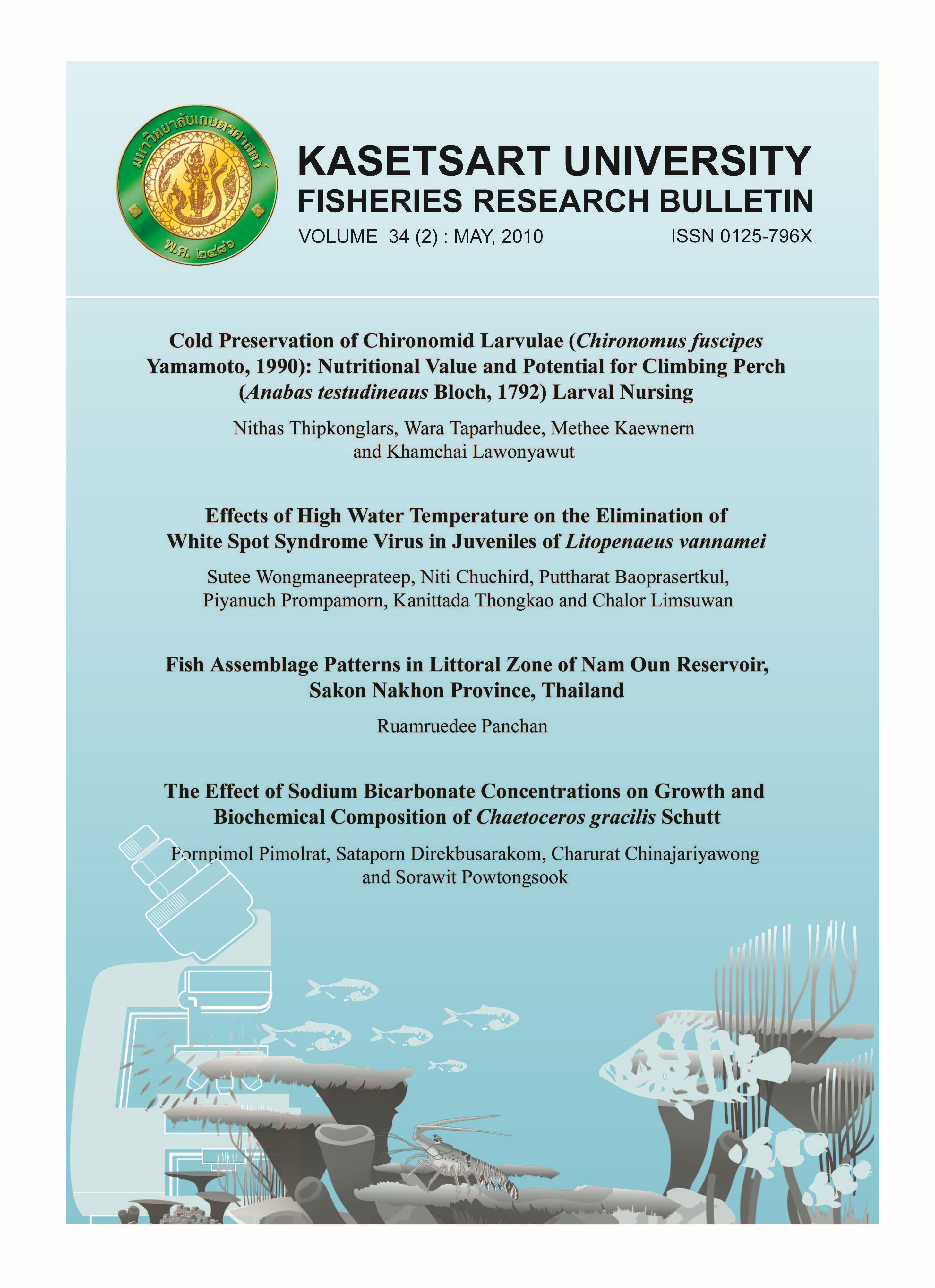Cold Preservation of Chironomid Larvulae (Chironomus fuscipes Yamamoto, 1990): Nutritional Value and Potential for Climbing Perch (Anabas testudineaus Bloch, 1792) Larval Nursing
Main Article Content
Abstract
The study on the efficacy of chironomid larvulae (Chironomus fuscipes Yamamoto, 1990) as live food for climbing perch (Anabas testudineaus Bloch, 1792) larvae compared with rotifer was conducted at the Inland Aquaculture Research Institute, Department of Fisheries, Phra Nakorn Si Ayutthaya province from October to December 2008. Three experiments were conducted. The first experiment determined the nutritive value of chironomid larvulae in terms of proximate composition, amino acid profiles, and fatty acid composition. Results showed that protein, fat, fiber, and ash contents in chironomid larvulae were 55.62, 4.57, 6.54 and 14.45%, respectively. Chironomid larvulae contained complete amino acid and fatty acid profiles. The second experiment determined the efficacy of protective media on the preservation of chironomid larvulae at 4°C. It revealed that embryonic solution showed the best result. The third experiment compared the efficacy of the preserved larvulae and rotifer as live food for rearing climbing perch larvae. Results showed that growth and survival of climbing perch larvae were not significantly different between the treatments (P>0.05).


